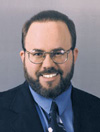Hub Changes in the Barber Silver Coins
Posted on 7/1/2004
 |
Sharp-eyed collectors of Charles Barber's Liberty Head silver coins (1892-1916) are aware that circulated pieces dated 1901 and later must be graded a bit differently from earlier issues. This is especially true of the quarters and halves. Using the published standards in grading books, it seems that most examples dated 1892-1900 are a half grade to a full grade lower on the reverse than the obverse. Conversely, coins dated 1901-16 usually will have fewer letters of LIBERTY visible than the overall condition would suggest.
The exact reason for this is little understood by most collectors, though a bit of reading reveals some clues. The three books on Barber coinage by the late David Lawrence Feigenbaum describe this phenomenon and mention differences in the dies before and after 1901. In his grand encyclopedia of United States coinage, the late Walter Breen likewise acknowledged that changes were made to the obverse and reverse hubs circa 1900-01. He obtained this information from articles published in Coin World in 1980 and written by John McCloskey (dime study) and by me (quarters and halves).
These were not the only hub changes in the Barber series. Slightly better known is that implemented for the Barber quarter during 1892, the first year of coinage. The earliest reverse dies have the eagle placed in such a way that less than half of the letter E in UNITED is covered by its wingtip. Shortly after coinage began, a new reverse hub was introduced on which the eagle has been moved upward ever so slightly, and its wingtip now covers most of the letter E. Dies from both hubs were used at the Philadelphia, New Orleans and San Francisco Mints, and coins having the first reverse are noticeably scarcer in each instance.
No changes were made to the dime or half dollar at that time, because it was the quarter dollar alone that presented a unique problem—it didn't have enough space below the eagle's tail for a mintmark! As noted in last month's column, this situation was ultimately solved by moving the mintmark to the right, where it remained off-centered through the end of the series. The Mint's first attempt to address this problem, however, involved moving the eagle upward to gain just a tiny extra bit of space, and thus was born two distinctive reverses for 1892.
The silver coinage introduced in 1892 otherwise proved quite satisfactory, and no further changes occurred until 1900. During that year, the Mint's Engraving Department prepared new hubs for several denominations. Affected were the reverses of the nickel and silver dollar, as well as both sides of the fractional silver coins. As with the hub change of 1892, no records survive to document why these alterations were made, so we have only the coins themselves to study. While some features of the design were moved slightly away from one another, reducing the likelihood of the dies chipping and filling in use, other changes appear to have been purely cosmetic. As chief engraver, Barber presumably did the work himself.
On the dime, Liberty's hair ribbon was moved away from the letter N in UNITED, and the leaves at the top of her head were lengthened and made more pointed. For the reverse, the right ribbon end was made thicker, and an extra fold was added to its lower side. On the quarter dollar, the ribbon securing Liberty's wreath was altered. On the old obverse, each ribbon end is deeply slitted and has slender forks, while the revised ribbon ends have much shorter slits that give the ribbons a more blunt appearance. On the reverse, the eagle's wingtips were lengthened so that they extend beyond the tops of the letters, whereas previously they had ended at the tops of the letters. The half dollar does not seem to have had any changes made to its reverse, yet its revised obverse reveals the altered ribbon ends, as well as possessing a feature common to all three denominations. For the dime, quarter and half alike, Liberty's ear was distinctly reshaped. On the old obverse hubs, the center of her ear was hollow, while the revised obverses display a central rib of cartilage that is quite prominent. In addition, her earlobe was made longer and noticeably thicker. A final feature common to all three coins is one which could very well account for the differences in wear patterns before and after 1901. Each coin's outer rim was made narrower on the new obverse and reverse hubs, thus covering less of the denticles' length. This change creates the illusion that the overall border is thicker, when in fact it is the same size.
Research into which obverse/reverse hub combinations exist for each mint during the years 1900-01 is still ongoing, but a number of transitional pieces have been found. The 1900-O quarter, for example, is known from both old and new hubs. Like the varieties of 1892, however, these transitional pieces seem to have generated little interest from collectors. Rare hub combinations are not yet bringing premium prices, and these offer an excellent opportunity for the astute collector to "cherrypick" a future treasure.
David W. Lange's column USA Coin Album appears monthly in Numismatist, the official publication of the American Numismatic Association.
Stay Informed
Want news like this delivered to your inbox once a month? Subscribe to the free NGC eNewsletter today!
